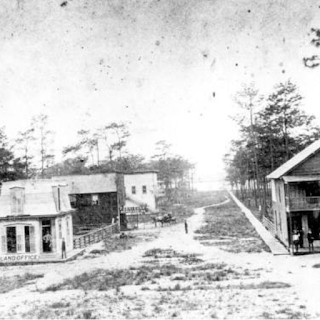 |
| Segment from a colorized postcard from 1938 shows the Shrine of Ste. Anne des Lacs in Lake Wales, Florida. Photo credit: Florida Memory |
Today, only handfuls of the faithful and the curious make their way to the lakefront Shrine of Ste. Anne des Lacs. Stonework crumbles in places and chipped inlaid tiles tell of past glory. An ornately decorated church once on the property is long gone.
But the essence and spirituality of the shrine remain. Many visitors describe feeling a sense of peace when they stop - and perhaps pray - before a statue of the Blessed Virgin Mary in a grotto built to resemble the one at Lourdes. In a 2015 article, the Lakeland Ledger dubbed the shrine a secret sanctuary.
Secret, indeed. I've lived in Florida a long time and love to explore historic sites and Catholic-related places. How can I have been ignorant of the very existence of the Ste. Anne des Lacs shrine? The site is apparently overseen by the Holy Spirit Catholic Church in Lake Wales. The parish history page makes only a brief mention of the shrine, under the year 1921. The site says Easter Mass is celebrated there.
I cobbled together the place's history from the WPA guide, the Ledger article, YouTube videos, Wikipedia, and Florida Memory, which is where I located the colorized postcard pictured with this post.
Thanks for the shrine's very existence are due to a long-ago resident named Napoleon Pelletier. He was among a group of Canadian Catholics who wintered in Lake Wales to escape harsh weather in the early 20th century.
Either way, we do know the date of the shrine's construction: 1920. By the time of the WPA guidebook's write-up in 1939, the property contained stone grottoes, statuary, and a little church in which Morsollier had painted scenes from the Holy Land. Even relics were kept at the shrine.
Here's how the guidebook describes shrine activity:
"Pilgrimages are made here annually as to the shrine of Our Lady of Lourdes in France and the shrine of Ste. Anne de Beaupre in Canada. High dignitaries and priests of the Roman Catholic church in the United States and Canada assist the local priest in conducting the ceremonies." (page 466)Those days are long gone. The place's faded grandeur - but also its current dignity - are evident in the YouTube video I linked below and in photos on Facebook.


















